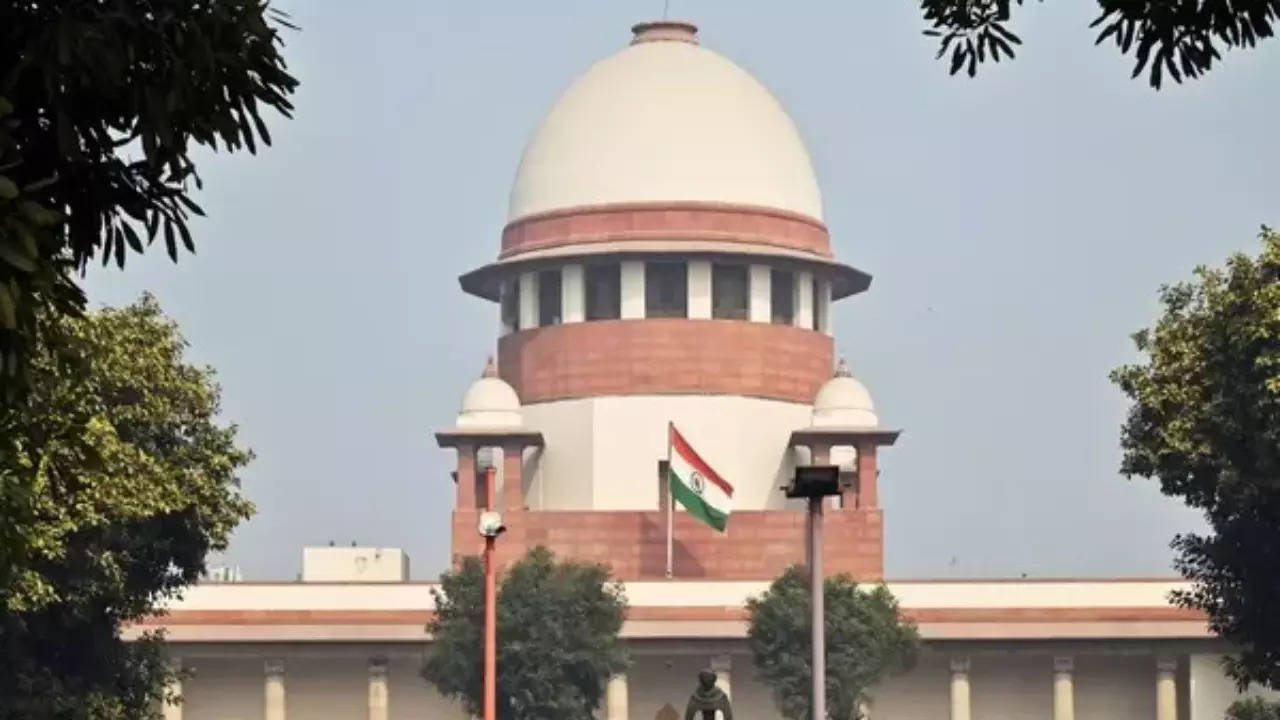[ad_1]
NEW DELHI: Stepping past constitutional courts‘ conventional function restricted to testing the constitutionality of legislations and validity of government selections and taking up oversight capabilities, Supreme Courtroom has dominated that it could possibly direct a efficiency audit of legislations to determine and handle infirmities of their implementation on the bottom.
This ruling got here from a bench of Justices P S Narasimha and Arvind Kumar, who requested the Bombay HC chief justice to represent a particular bench for a efficiency audit of Maharashtra Slum Areas (Enchancment, Clearance and Redevelopment) Act, 1971, which has, through the years, been within the eye of litigation in HC and even in SC.Justice Narasimha stated, “Evaluation of the working of the statute to understand if its goal and goal has been achieved or not is the implied responsibility of the manager authorities.”
SC: Overview goals to make sure regulation is working in observe
Justice P S Narasimha stated, “Reviewing implementation… is an integral a part of rule of regulation. It’s in recognition of this obligation of the manager govt that constitutional courts have directed govts to hold out a efficiency audit…”
The aim of overview is to make sure a regulation is working in observe because it was meant and if it’s not, then to grasp why and handle it rapidly, bench stated, whereas pointing to a different purpose for such efficiency audits.
“A peculiar function of how our legislative system works is that an awesome majority of legislations are launched and carried by way of by govt, with few personal member payments being launched and debated. In such circumstances, judicial function does embody, on this court docket’s understanding, the ability, nay the responsibility, to direct the manager department to overview the working of statutes and audit the statutory impression,” the bench stated.
Nevertheless, SC clarified that earlier than a constitutional court docket orders efficiency audit of a laws, it should assess the litigation historical past of the operation of the regulation to reach at a discovering that “statutory schemes and procedures (below that laws) are gridlocked in bureaucratic or judicial quagmires that impede or delay statutory aims”.
“One can solely state that this course should be predicated on a discovering that the statute has, by way of demonstrable judicial knowledge or different cogent materials, did not ameliorate the circumstances of the beneficiaries.”
This ruling got here from a bench of Justices P S Narasimha and Arvind Kumar, who requested the Bombay HC chief justice to represent a particular bench for a efficiency audit of Maharashtra Slum Areas (Enchancment, Clearance and Redevelopment) Act, 1971, which has, through the years, been within the eye of litigation in HC and even in SC.Justice Narasimha stated, “Evaluation of the working of the statute to understand if its goal and goal has been achieved or not is the implied responsibility of the manager authorities.”
SC: Overview goals to make sure regulation is working in observe
Justice P S Narasimha stated, “Reviewing implementation… is an integral a part of rule of regulation. It’s in recognition of this obligation of the manager govt that constitutional courts have directed govts to hold out a efficiency audit…”
The aim of overview is to make sure a regulation is working in observe because it was meant and if it’s not, then to grasp why and handle it rapidly, bench stated, whereas pointing to a different purpose for such efficiency audits.
“A peculiar function of how our legislative system works is that an awesome majority of legislations are launched and carried by way of by govt, with few personal member payments being launched and debated. In such circumstances, judicial function does embody, on this court docket’s understanding, the ability, nay the responsibility, to direct the manager department to overview the working of statutes and audit the statutory impression,” the bench stated.
Nevertheless, SC clarified that earlier than a constitutional court docket orders efficiency audit of a laws, it should assess the litigation historical past of the operation of the regulation to reach at a discovering that “statutory schemes and procedures (below that laws) are gridlocked in bureaucratic or judicial quagmires that impede or delay statutory aims”.
“One can solely state that this course should be predicated on a discovering that the statute has, by way of demonstrable judicial knowledge or different cogent materials, did not ameliorate the circumstances of the beneficiaries.”
[ad_2]
Source link
This Put up might comprise copywrite



